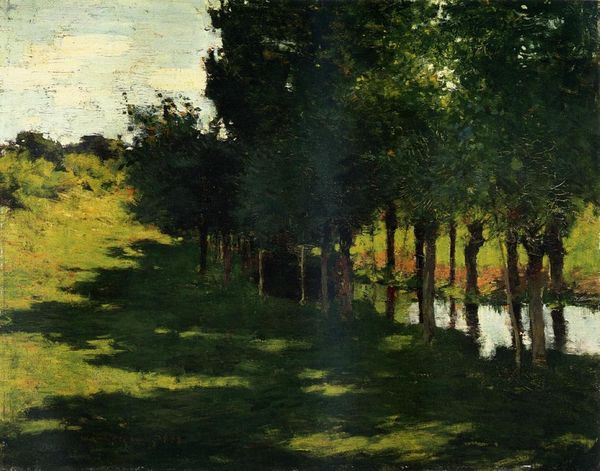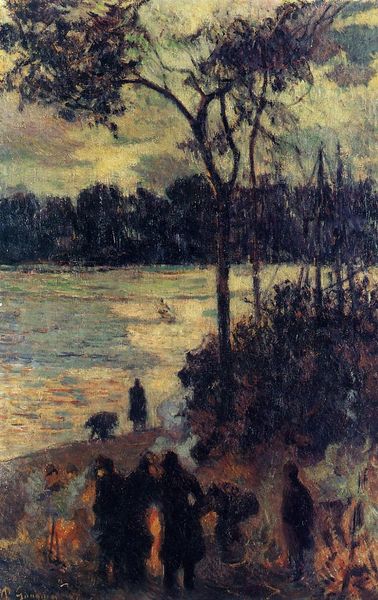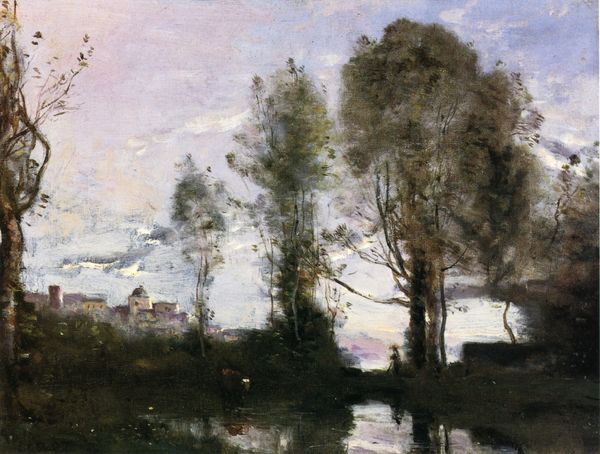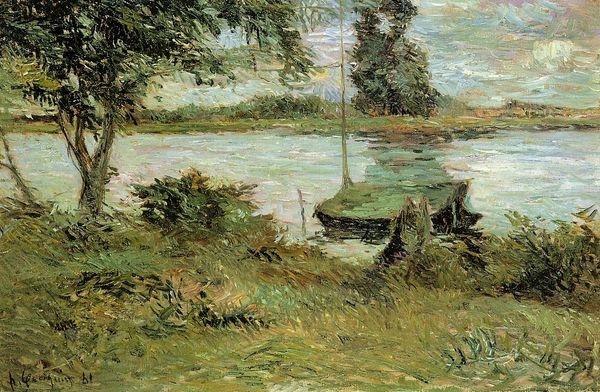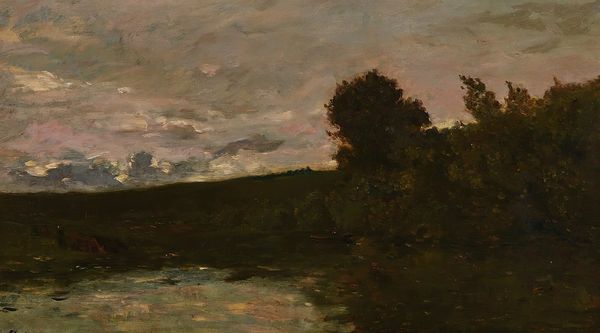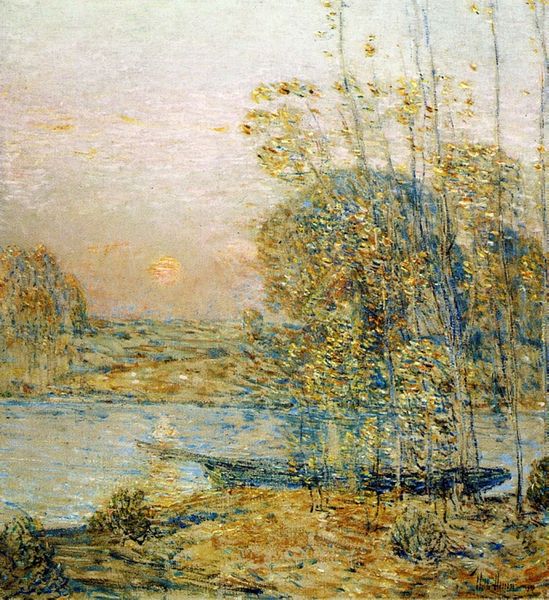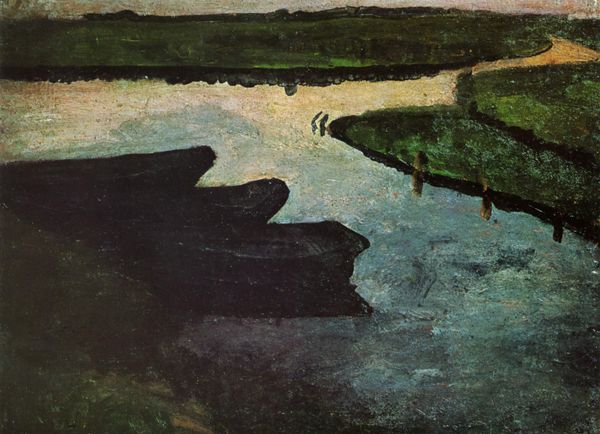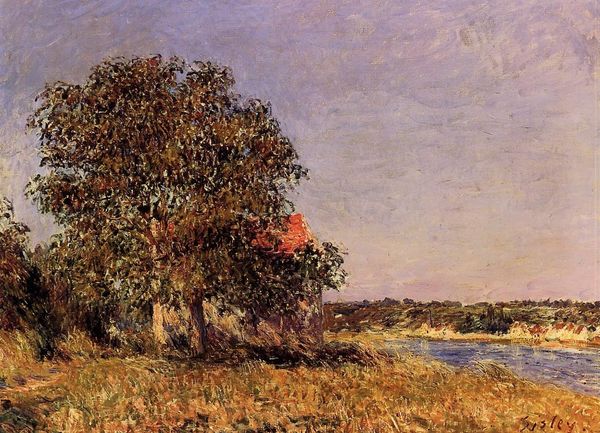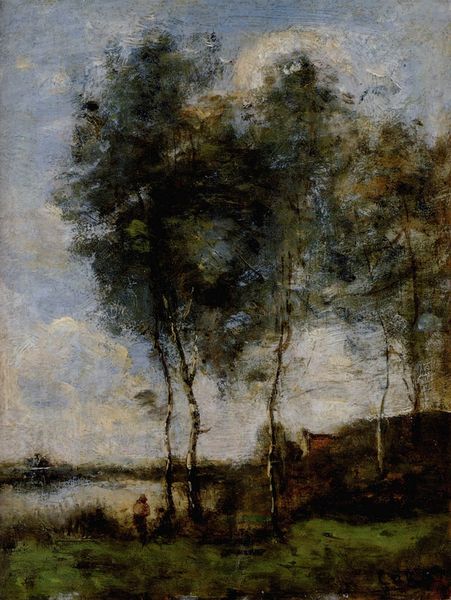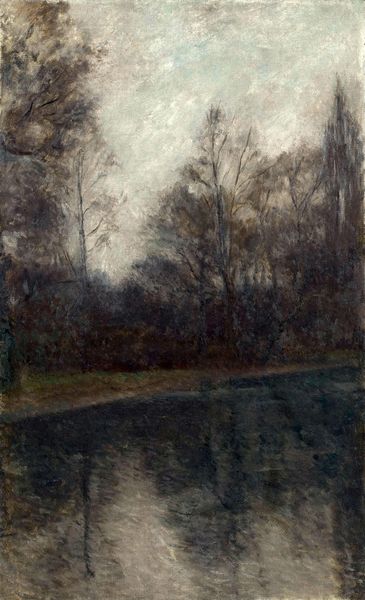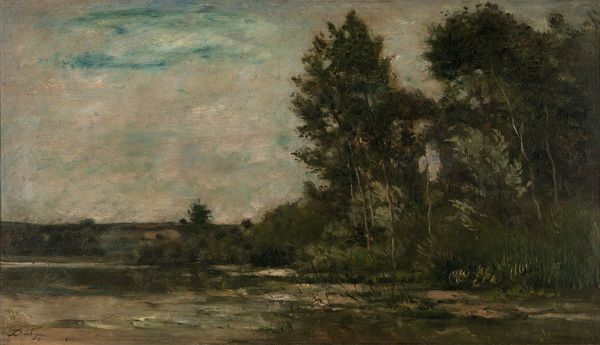
Copyright: Public domain US
Curator: Here we have Zinaida Serebriakova’s “Landscape with a River,” painted in 1911, rendered in oil on canvas. Editor: It's brooding. The cool blues and greens feel so heavy, like the sky is pressing down on the landscape. I can almost smell the damp earth. Curator: I find myself considering Serebriakova’s artistic trajectory here. We see the influence of Impressionism and Post-Impressionism, but through a lens focused on the material realities of rural life. What did it mean to be painting landscapes in Russia during a time of enormous social and political upheaval? How accessible were painting supplies at the time? These are factors we need to think about. Editor: Absolutely. But beyond that, doesn’t the somber palette and the way the trees loom over the river suggest a symbolic representation of the Russian soul – the mystery, the melancholy, and perhaps even a premonition of darker times to come? Water often represents the unconscious, or the passage of time... Curator: A passage made possible by the infrastructure of trade, certainly, both local and international given the accessibility of oil paints and canvas to Russian artists at the time, despite the existing local materials available. The darker areas may symbolize areas untouched by industrial labor practices too... Editor: Interesting, I see the industrial elements are quite relevant for you. Though that might be, for me the subdued palette evokes feelings of longing and quiet introspection, particularly because it emphasizes an interplay between the shadows and light, perhaps showing her longing for light, her quest through shadow... I think we are given a glimpse into her emotions. Curator: Precisely! And considering the scarcity of materials during that period, especially for a woman artist, the commitment itself to her practice reveals both determination, ingenuity and maybe economic status as well. Every brushstroke reveals layers of intention shaped by circumstance. Editor: It’s a beautiful testament to her resilience and her evocative capacity to transpose that material struggle, maybe unconsciously, into timeless visual symbols, a universal experience for everyone watching it. Curator: I think considering it alongside the artistic struggle for access we are on the path for an insightful point of view of the work as a whole. Editor: Absolutely, there is so much that could be analyzed on the artist's mind and her work.
Comments
No comments
Be the first to comment and join the conversation on the ultimate creative platform.

